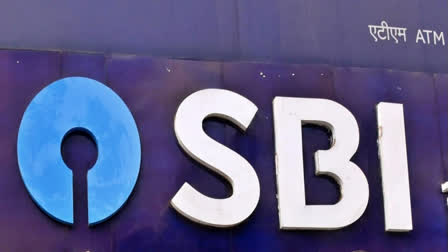New Delhi:The rupee may depreciate 8-10 per cent against the US dollar during the Trump 2.0 regime, said a SBI research report, even as the local currency hit its all-time low on Monday.
The report, titled US Presidential Election 2024: How Trump 2.0 Impacts India’s and Global Economy, emphasised that the rupee can have a brief spell of depreciation against the US dollar, followed by appreciation.
Donald J Trump’s historical comeback as the 47th President of the United States adds a morphine shot to the markets and select asset classes even as the focus is now shifting to wider economic ramifications and supply chain realignments, the report said.
"Trump's victory introduces a mix of challenges and opportunities for India. While the potential for increased tariffs, H-1B restrictions, and a strong dollar could bring short-term volatility...But it also presents India with long-term incentives to expand its manufacturing, diversify export markets, and enhance economic self-reliance," it added.
It further said the 10-year yield shows no obvious trends, and the effect will be context-sensitive, going ahead. "USD/INR has shown range bound movement, and the rupee can have a brief spell of depreciation followed by appreciation...Volatility in Indian equity markets showing signs of reduction," the SBI's study said.
Declining for the fourth straight session, the rupee dropped 2 paise to hit a new lifetime low of 84.39 (provisional) against the US dollar on Monday, weighed down by persistent foreign fund outflows and a muted trend in domestic equities.
Forex traders said the rupee is likely to remain under pressure unless there is a softening in the dollar index or a slowdown in foreign fund outflows. The report emphasised that "the fear" that the rupee will depreciate sharply is unfounded. During the Trump 1.0, it said, the rupee depreciated by 11 per cent, less than it depreciated during the Joe Biden term.
While a stronger dollar might result in short-term capital outflows for short-term as investors flock to dollar-based assets, on a positive note, a lower rupee might provide an export advantage, potentially boosting revenues in sectors like textiles, manufacturing, and agriculture, the research report said.
"Still, we expect a depreciation of 8-10 per cent during Trump 2.0," the SBI research report said. It also noted that the depreciation of the rupee may increase the import cost of oil and other commodities. "As per our estimate, a 5 per cent decline in rupee will increase inflation by 25-30 bps. So, the impact will be very less on inflation," it said.
According to the report, India may see shifts in foreign direct investments (FDIs) during Trump 2.0. The Trump 1.0 administration saw significant regulatory changes aimed at attracting investments back to the US, and this was reflected in data also.
"However, India is no longer dependent on the traditional sources of FDI inflows... unlike the recent past, FDI is now coming in many new sectors like non-conventional energy, sea transport, medical and surgical appliances, etc," it said.
This trend could continue, thus offsetting the possibility of a decline in FDI flows in traditional sectors in Trump 2.0, if any. The SBI report further said if the Trump administration opts to limit work visas, particularly the H-1B visa programme, Indian IT and ITeS sectors may see increased costs. H-1B visa restrictions can lead to decreased labour mobility, affecting the hiring capabilities of Indian IT companies operating in the US.
This, the report said, may result in Indian firms to allocate resources towards hiring locally in the US at a higher cost, which could strain margins for companies. During Trump 1.0 the non-immigrant visas issued by the US largely stagnated around 10 lakh per year. However, in 2023, about 14 lakh Indians received non-immigrant visas, the report said.
